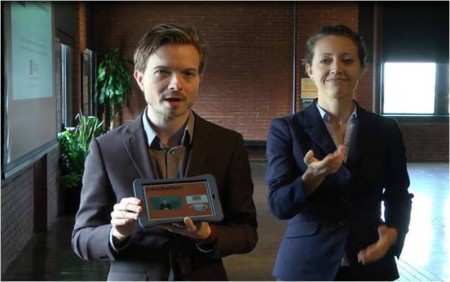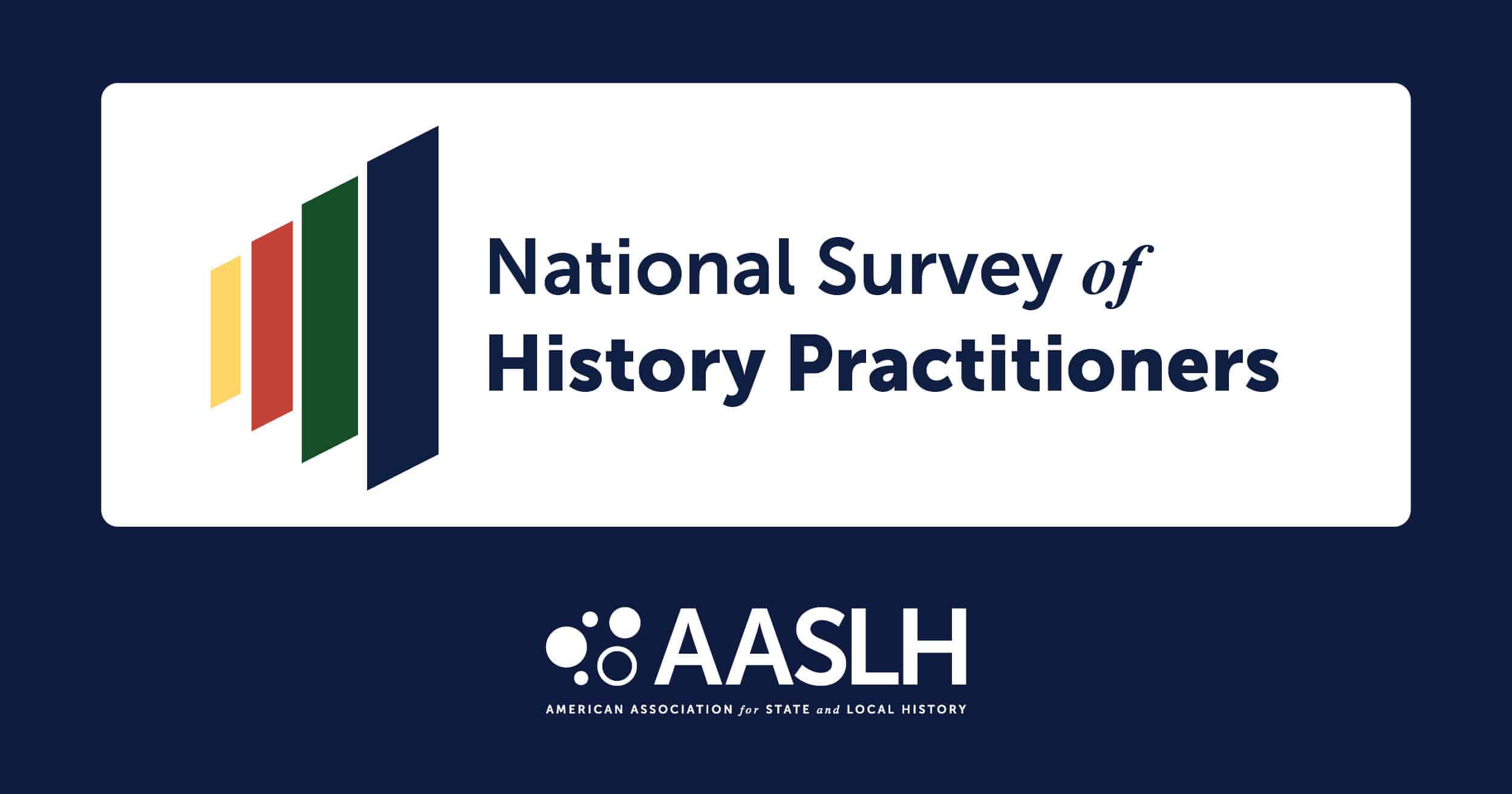The Sixth Floor Museum welcomes hundreds of thousands of visitors each year. We strive to make all of our guests feel welcome, and provide an audio guide to our permanent exhibit in Spanish, German, Brazilian Portuguese, French and Japanese, as well as English and, very soon, Mandarin. A Family version of the guide is also available to younger guests. It explains terms such as segregation, Cold War and motorcade: words and phrases that are commonplace to most adults, but unfamiliar to many children. To accommodate our Deaf and Hard-of-Hearing guests, printed copies of the audio tour script have always been available, and the films in our exhibit are closed-captioned. We believed that we were making a good faith effort to address the needs of our Deaf visitors. But through a new partnership with Winkshop, Inc., we learned that we could do far more….
Wink Smith Jr. is a national American Sign Language (ASL) performer and presenter. His company, Winkshop, provides high-quality training, educational and entertainment materials for ASL users and those acquiring the language. Wink was raised by two Deaf parents, and his upbringing led him to become a life-long advocate for the Deaf community. He also loves history and has been personally moved by the life and legacy of President John F. Kennedy. He had toured The Sixth Floor Museum before and made a powerful connection to the story. Wink wanted his father to experience the emotional impact of the first-hand stories and news reports conveyed on the audio guide. He felt strongly that access to the written transcript would not be as personal or as effective. In 2013 Wink contacted the Museum about converting the audio guide to ASL and the journey began!
On Monday, June 23, 2014, after numerous conference calls and an impressive amount of Dropbox file sharing, the new ASL guide to The Sixth Floor Museum was launched. Here’s what we’ve learned so far:
- Deaf is a culture and therefore there’s a lot we need to learn about working with the Deaf community. Our staff will require introductory and ongoing training to provide the best possible service to our Deaf guests.
- After many discussions about possible technologies to use, we landed on iPad minis as the easiest tool for providing the video translations.
- Even though it is the same content, we learned that the ASL translation of our audio guide is longer than our English language version, so it takes Deaf guests longer to complete their visit.
- Our iPad minis are stored in cases that are attached to lanyards. Even with the lanyards, they get heavy for users, who have to tilt the screens to view the content.
- It is important to have policies and rules in writing for Deaf users, so that they can read policies about borrowing and returning the ASL guides.
- Our staff is so enthusiastic about the ASL guide! It’s been heartwarming to see how excited everyone is about this new service.
- The Deaf community appreciates the effort! We piloted the guide with a small group of Deaf community members and leaders and the word has spread quickly. Five Deaf guests used the ASL players the very next day! We have since had several inquiries from visitors asking how to reserve an ASL guide during their upcoming visit, and a number of walk-in visitors have also requested them.
- ASL is a beautiful language! Watching Wink and the other translators interpret the words of the eyewitnesses, journalists and law enforcement officials really is beautifully expressive. It made many of us want to learn ASL!
- Embrace the opportunity. Through this effort we worked with Winkshop to create an ASL news release to accompany the traditional media release. Check out our first-ever ASL news release on our YouTube page.
- Schools have expressed interest. A staff member shared details of this new resource with his sister, who is just returning to teaching ASL at a local elementary school. She has shared information about the ASL guide with other teachers during staff development and they want to do a staff training at the Museum before school starts.
- Once you make an effort to become more accessible, others will step forward to help. A Board member secured a matching gift from his law firm to underwrite eight iPad minis when we explained what we were trying to do. We currently have ten players, and hope to get additional donations so that we can promote the ASL guide to larger Deaf or Hard-of-Hearing groups.
- Getting comfortable communicating with Deaf visitors is a challenge for our staff, but so rewarding. We are learning that our Deaf visitors are very accustomed to dealing with the hearing community, so while we’re still learning how to serve this audience, they’re very familiar communicating their needs to the hearing world. Keep in mind that a smile goes a long way (and a bit of training on how to sign simple phrases like “Thank you” and “You’re welcome” doesn’t hurt either).
- Finding a partner like Winkshop is vital. Not only did Wink provide the vision and enthusiasm, but he has helped us get smart about why terms like “hearing impaired” and the use of lower case “deaf” are inappropriate. It’s important to have guidance from a trusted individual or group so that you don’t offend the very audience you hope to reach.
Once your organization starts thinking about accessibility, you’ll find lots of ways that you can do better. You’ll actually want to do better! We’re now having our foreign language translations printed and placed in binders for Deaf visitors who speak languages other than English. We also hope to work with local organizations that service the Deaf community to offer ASL interpretation at some of our public programs. Finally, now that we’ve made a successful start at better serving our Deaf guests, we want to find ways to address the needs of blind visitors. It’s exciting but it’s just a start. As with any community you attempt to serve, it’s an ongoing proposition: we’ll need to make adjustments and learn as we go.
What is your organization doing to become more accessible?
Have you heard about creative strategies for making exhibits and programs more appealing to Deaf visitors?





